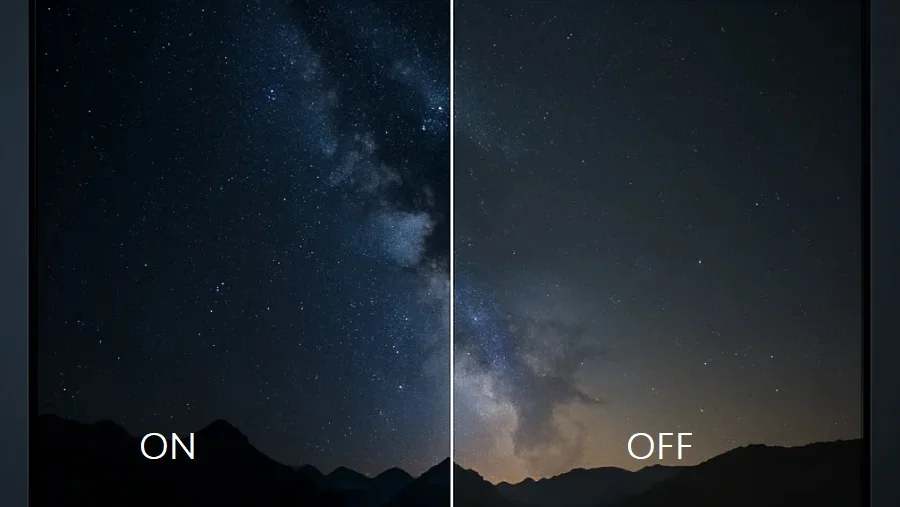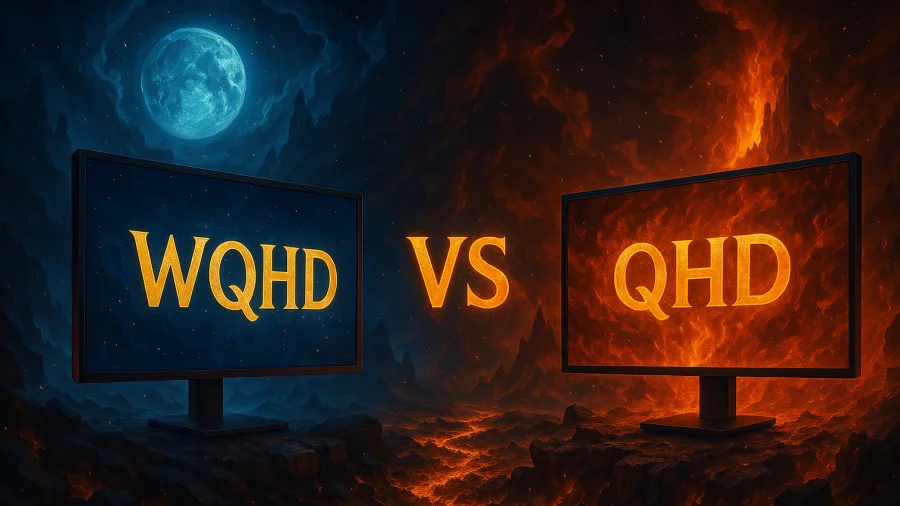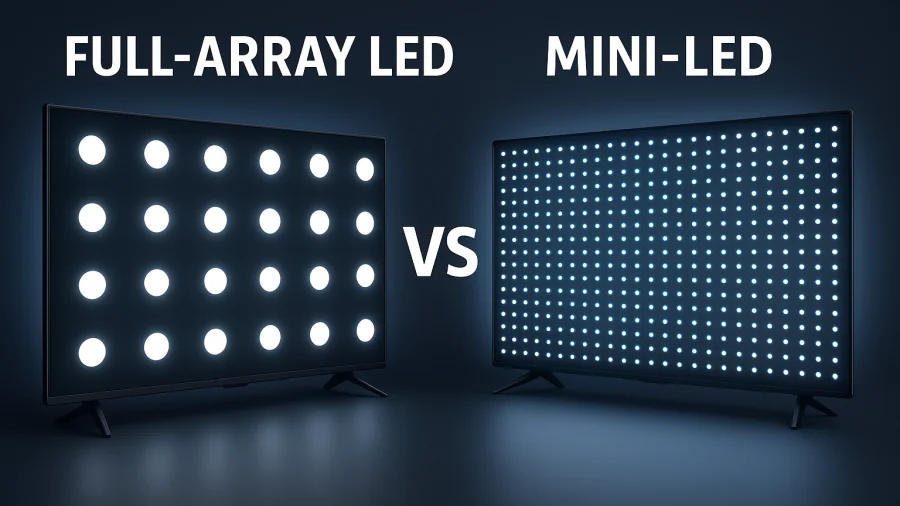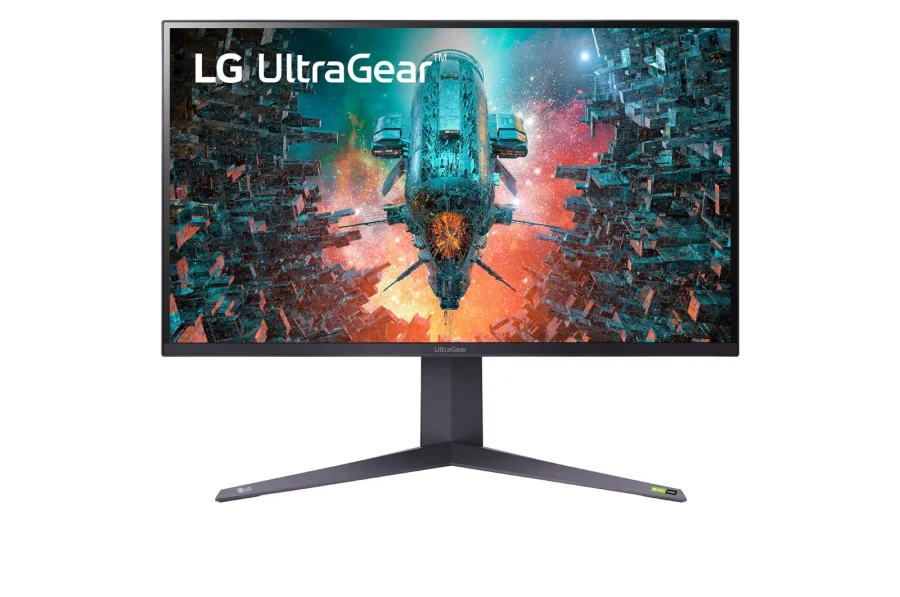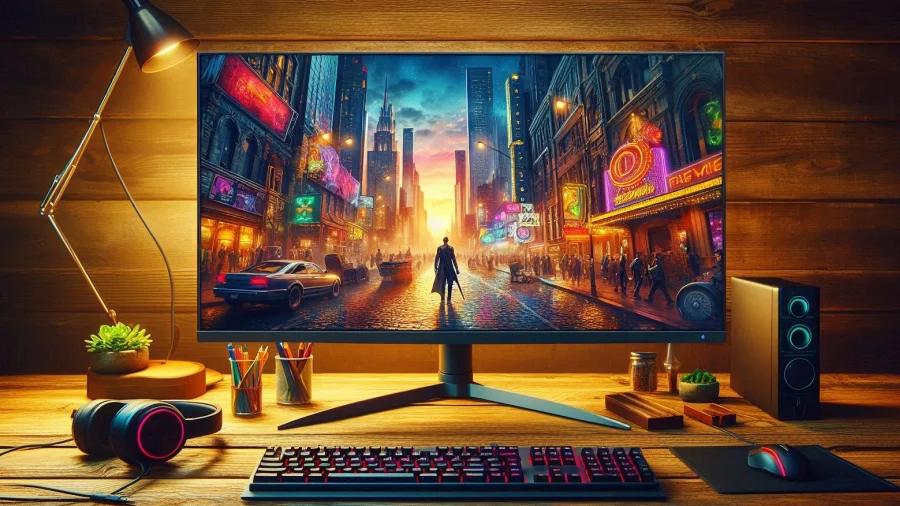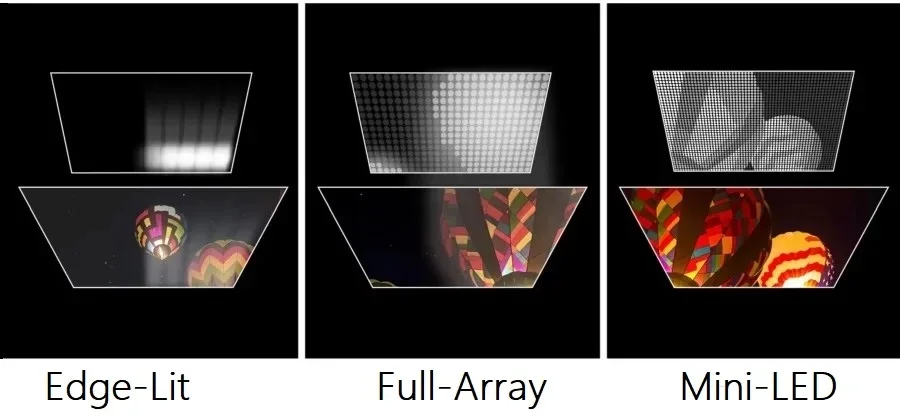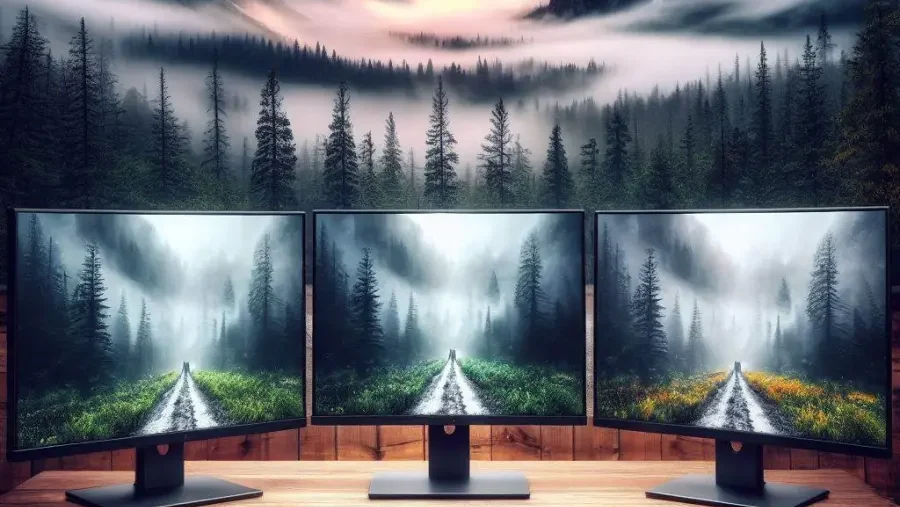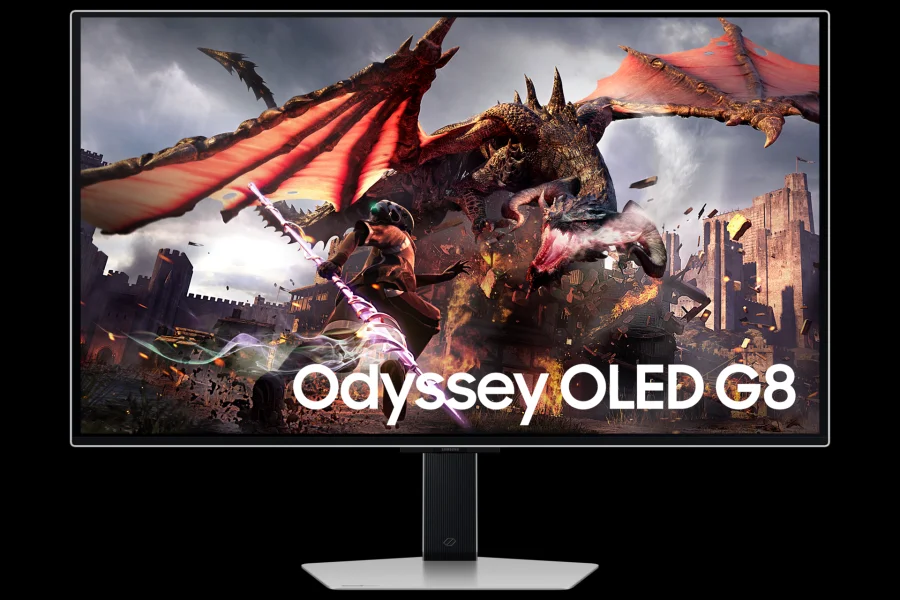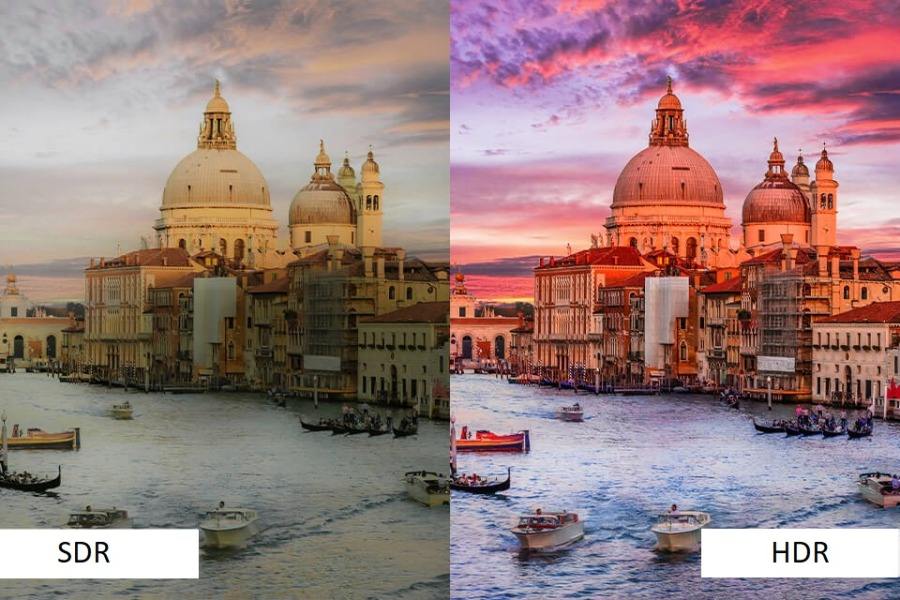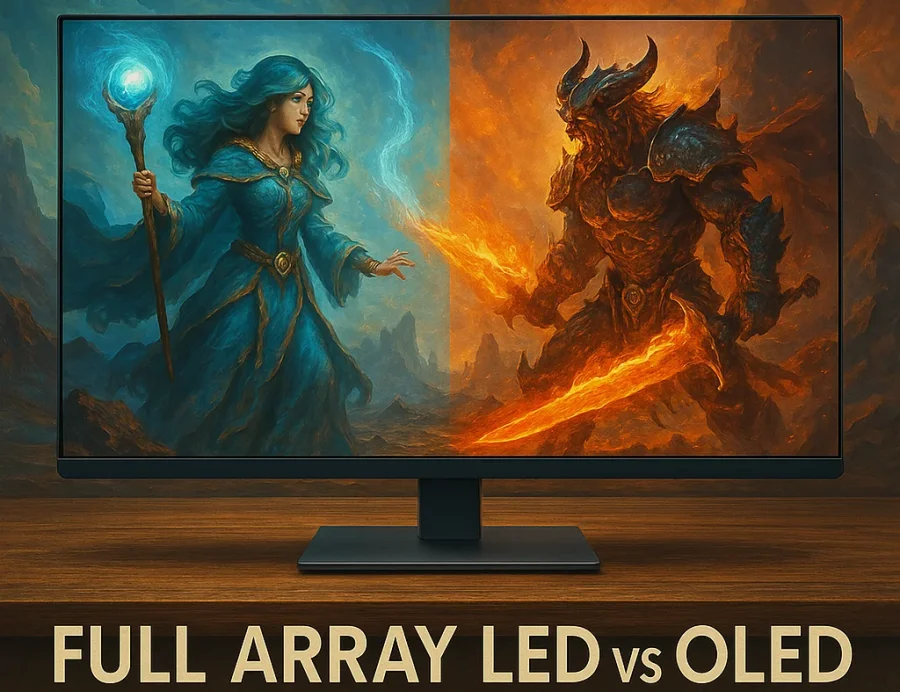
Choosing a new television involves navigating a landscape filled with technical jargon. Two dominant premium display technologies you’ll encounter are Full Array LED and OLED.
Understanding the fundamental differences between them is crucial for making an informed decision.
LED technology, in its various forms, has been the backbone of LCD TVs for years, while OLED represents a distinct approach to creating images.
This comparison matters because each technology offers unique strengths and weaknesses impacting picture quality, performance, and price, ultimately determining your viewing experience.
Understanding Full Array LED
LED TVs are actually LCD TVs that use Light Emitting Diodes (LEDs) as their backlight source.
The Liquid Crystal Display (LCD) panel itself doesn’t produce light; it acts like a shutter, blocking or allowing light from the backlight to pass through to create the image.
Full Array LED specifically refers to a backlight configuration where LEDs are placed directly behind the entire screen, rather than just along the edges (edge-lit) or in a simpler grid (direct-lit).
This allows for a feature called Full Array Local Dimming, or FALD.
FALD divides the backlight into numerous zones that can be independently brightened or dimmed.
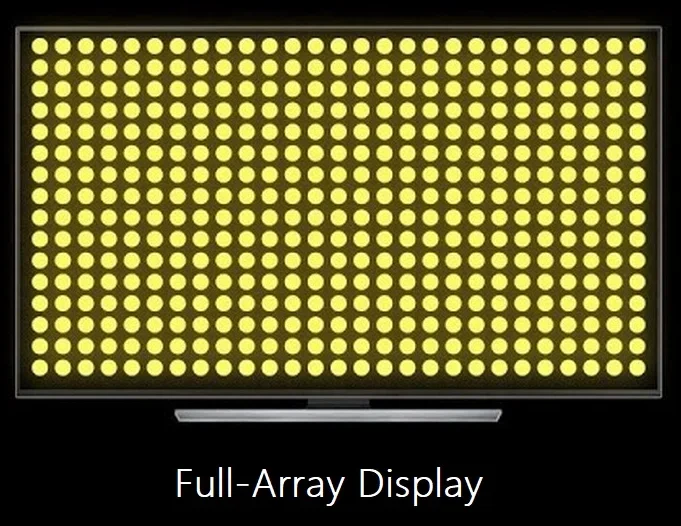
When a part of the image is dark, the LEDs in that corresponding zone can dim significantly, improving black levels and contrast compared to TVs without FALD.
The more dimming zones a Full Array LED TV has, generally the better its ability to control light and darkness across the screen.
A primary advantage of Full Array LED technology is its potential for very high brightness levels. This makes these TVs particularly well-suited for viewing in bright rooms where ambient light might wash out lesser displays.
They also tend to offer good performance with High Dynamic Range (HDR) content, where peak brightness is key to impactful highlights.
Furthermore, Full Array LED TVs are generally not susceptible to permanent image retention or ‘burn-in’. On the downside, even with advanced local dimming, they cannot achieve the perfect black levels of OLED.
Some light leakage or ‘blooming‘ around bright objects on dark backgrounds can sometimes be visible, as the dimming zones are larger than individual pixels.
Viewing angles can also be more limited compared to OLED, with colors and contrast potentially shifting when viewed from the side.
Understanding OLED
OLED stands for Organic Light-Emitting Diode. Unlike LED/LCD TVs, OLED displays do not require a separate backlight.
Instead, each individual pixel in an OLED screen is made of organic compounds that light up when electricity is applied. Essentially, every single tiny dot on the screen creates its own light.
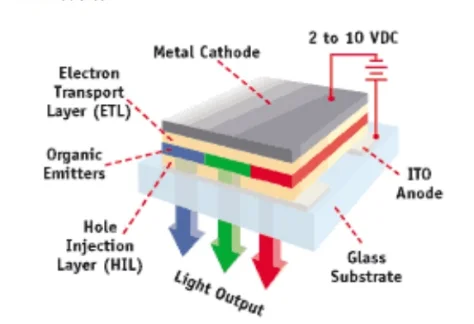
This self-emissive nature is the key differentiator for OLED technology. Because each pixel generates its own light, it can also be turned off completely.
When a pixel is off, it emits no light whatsoever, resulting in true, absolute black. This ability to achieve perfect black alongside bright pixels creates a theoretically infinite contrast ratio.
The result is a picture with incredible depth, detail, and realism, especially noticeable in dark scenes. The most significant pros of OLED are its perfect black levels and the resulting infinite contrast ratio.
This leads to exceptionally vibrant colors that appear to ‘pop’ against the deep blacks.
OLED displays also boast extremely wide viewing angles, meaning the picture quality remains consistent even when watching from far off to the side.
Pixel response times are near-instantaneous, making OLED excellent for fast-paced content like sports and video games, minimizing motion blur.
OLED panels can also be made incredibly thin and even flexible, allowing for sleek TV designs.
However, OLED TVs generally cannot reach the same peak brightness levels as the brightest Full Array LED models. This can make them slightly less impactful in very bright, sunlit rooms.
Historically, the most discussed drawback has been the potential risk of ‘burn-in‘, where static images displayed for extended periods could potentially leave a faint, permanent ghost image.
Modern OLED TVs incorporate various mitigation technologies to minimize this risk significantly, but it remains a consideration for users displaying static content for many hours daily.
OLED TVs also typically command a higher price compared to similarly sized Full Array LED models.
Full Array LED vs OLED: Key Differences
| Feature | Full Array LED | OLED (Organic Light-Emitting Diode) |
|---|---|---|
| Black Levels & Contrast | Uses local dimming for deep blacks, but light can still bleed (blooming). | Achieves perfect black as pixels turn off completely. Infinite contrast ratio. |
| Brightness Capabilities | Generally offers higher peak brightness levels, advantageous in bright rooms. | Solid brightness, but lower peak levels than top-tier LEDs. |
| Color Accuracy & Vibrancy | Can produce excellent, vibrant colors, especially models with Quantum Dots. | Exceptional color vibrancy, boosted by perfect blacks. Excellent accuracy. |
| Viewing Angles | Can show shifts in color and contrast when viewed from significant side angles. | Offers very wide viewing angles with minimal picture degradation. |
| Response Time & Gaming | Fast response times suitable for gaming, but slightly slower than OLED. | Near-instantaneous pixel response time, ideal for fast motion and gaming. |
| Durability & Burn-in Risk | Immune to permanent image retention or burn-in. | Carries a small risk of burn-in with prolonged static images (mitigated). |
| Price & Affordability | Generally more affordable, with options across various price points. | Typically positioned as a premium technology with higher prices. |
Black levels and contrast
OLED achieves perfect black levels because individual pixels can turn completely off. This results in an infinite contrast ratio, offering unparalleled depth in dark scenes.
Full Array LED uses local dimming to make blacks very dark, but it cannot match OLED’s pixel-level control, sometimes leading to blooming.
Brightness capabilities
Full Array LED TVs generally achieve higher peak brightness levels than OLEDs. This gives them an advantage in brightly lit rooms and for displaying impactful HDR highlights.
OLED brightness has improved but typically lags behind high-end LEDs in sheer luminance output.
Color accuracy and vibrancy
Both technologies can deliver excellent color accuracy and wide color gamuts. OLED often appears more vibrant due to its infinite contrast, making colors stand out against perfect blacks.
High-end Full Array LEDs, particularly those using Quantum Dot technology (often marketed as QLED), can produce extremely vibrant and voluminous colors, especially at high brightness.
Viewing angles
OLED offers superior viewing angles. Colors and contrast remain largely consistent even when viewing the screen from extreme side positions.
Full Array LED TVs, like most LCD-based technologies, can exhibit some color and contrast shift when viewed off-axis.
Response time and gaming performance
OLED has a near-instantaneous pixel response time. This minimizes motion blur, making it ideal for fast-action movies, sports, and especially video gaming.
Full Array LED response times are very good but inherently slower than OLED, which can lead to slightly more motion blur.
Durability and burn-in risk
Full Array LED technology is not susceptible to burn-in. OLED technology carries a potential, though reduced, risk of burn-in from prolonged static images.
Modern OLEDs have features like pixel shifting and logo luminance adjustments to prevent this, making it less of a concern for typical varied viewing habits.
Price and affordability
Full Array LED TVs are generally more affordable than OLED TVs, especially at larger screen sizes. OLED technology remains a premium option, often positioned at the higher end of the market.
Ideal Use Cases
Consumers who primarily watch TV in bright rooms may prefer a Full Array LED display. Its higher brightness capabilities help overcome ambient light for a clearer picture during the day.
Those concerned about the potential for burn-in, perhaps due to heavy gaming with static HUDs or using the TV as a PC monitor, might find FALD LED a safer choice.
Buyers seeking the largest possible screen size for their budget will often find better value with Full Array LED.
Movie enthusiasts and cinephiles who prioritize the absolute best picture quality, especially in controlled, darker viewing environments, will benefit most from OLED. Its perfect blacks and infinite contrast deliver a truly cinematic experience.
Serious gamers looking for the fastest response times and minimal motion blur will appreciate OLED’s performance advantages. Households where viewers often watch from off-center angles will also find OLED’s wider viewing angles beneficial.
Ultimately, consider your environment: bright rooms lean towards FALD LED, while dark rooms favor OLED.
Consider your usage: mixed content is fine on both, but extreme static content favors LED, while critical movie/gaming favors OLED.
Conclusion
In a battle of Full Array LED vs OLED, both technologies offer fantastic viewing experiences, but they excel in different areas.
Full Array LED shines with high brightness, making it great for bright rooms and HDR highlights, while offering good contrast and no burn-in risk, often at a more accessible price point.
OLED dominates with perfect black levels, infinite contrast, superb viewing angles, and ultra-fast response times, providing arguably the best picture quality, especially for movies and gaming in darker settings, albeit typically at a premium price and with a small theoretical burn-in risk.
The right choice hinges on your individual priorities, your typical viewing environment, the type of content you watch most, and your budget.
Looking ahead, display technology continues to evolve. Emerging options like QD-OLED aim to combine the perfect blacks of OLED with the enhanced color volume of Quantum Dots.
MicroLED looms as a potential future successor to both, promising the brightness of LED with the self-emissive pixel control of OLED, though it remains very expensive for now.
Q&A
Is full array LED better than QLED?
This isn’t a direct comparison, as they refer to different parts of TV technology. Full Array Local Dimming (FALD) is a backlight type where LEDs are placed across the entire back of the screen, allowing for precise brightness control and better contrast. QLED (Quantum Dot LED) refers to a layer of quantum dots added to an LED TV to enhance color volume and brightness. Many high-end QLED TVs also use a Full Array backlight for optimal performance. So, a TV can be both, and FALD itself primarily improves contrast, while QLED improves color.
What are the benefits of full array LED TV?
The main benefit of a Full Array LED TV is significantly improved picture quality compared to edge-lit or direct-lit LED TVs without local dimming. By having LEDs distributed across the entire back panel in multiple zones, the TV can dim specific areas for deeper blacks while keeping other areas bright. This results in superior contrast, reduced blooming or halo effects around bright objects on dark backgrounds, and more uniform screen brightness.
Is Sony full array good?
Yes, Sony’s Full Array LED TVs are generally considered very good and are often highly rated. Sony combines their FALD technology with sophisticated image processing (like their Cognitive Processor XR in newer models). This pairing typically results in excellent contrast, accurate colors, impressive detail, and effective local dimming performance, making them a strong contender in the premium LED TV market.
What is better LED or OLED?
Neither is universally “better”; they excel in different areas. OLED TVs offer perfect blacks and infinite contrast because each pixel lights itself and can turn off completely. They also have wider viewing angles and excellent motion handling. However, LED TVs (especially high-end QLEDs with FALD) can achieve much higher peak brightness, making them great for bright rooms, and they aren’t susceptible to burn-in. The best choice depends on your viewing environment (dark vs. bright room) and priorities (perfect blacks vs. maximum brightness and burn-in immunity).
Read Next

